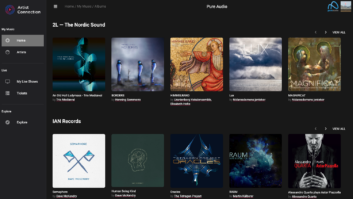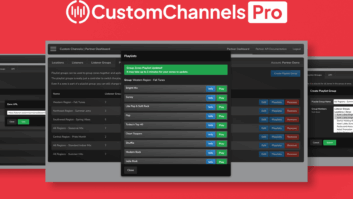
Streaming has become mainstream for more than just binge-watching movies. People across the globe are utilising streaming services to consume news and current events in real time on their phones, laptops and TVs. The US presidential election is a great example of how major global events can be accessed across multiple channels, and via multiple devices simultaneously – if internet bandwidth allows it.
Access to fast broadband has stoked the growth of streaming and enabled its use as a business tool. Which is just as well, because in recent months the enforced lockdown has seen businesses pivot to the internet to reach both internal and external audiences. Streaming has been their content delivery method of choice, providing a viable way to deliver online and hybrid seminars and conferences, training courses and workshops, and even virtual exhibitions.
The irony is that even before the Covid-19 pandemic, streaming was being adopted as a new way to engage virtually by organisers of sporting events, music festivals and business conferences. Access to streamed content on personal devices also enhanced the in-person experience.
What lockdown did reveal, however, is that delivering a great streaming experience requires a lot more than just a good internet connection.
Very quickly, companies have had to consider whether IT infrastructures are up to scratch. Low-latency streaming needs more than a single content delivery network (CDN). To reach disparate audiences globally and guarantee high performance, the best option is a multi-CDN strategy. This has the benefit of eliminating the risks associated with single-points-of-failure that can take services offline, and it allows companies to enter service agreements with multiple providers which can reduce their financial and technical exposure.
Taking a multi-CDN approach
To put this into context, we can use a real example. Just prior to the pandemic, we worked with a customer to manage traffic steering for the live-streaming portion of a large-scale sporting event. The event was scheduled to last for about four hours, and the customer expected a few million concurrent users accessing the live stream simultaneously. The event was also attended in-person and broadcast on TV, so there was no room for lag or downtime with the streams.
While the event was to be streamed globally, the user traffic was expected to come predominantly from North America, and to support this, the customer had a multi-CDN setup of five CDNs. One of the main purposes of using a multi-CDN set-up is to ensure that each CDN allows the customer to meet demands locally.
The most important consideration was how the stream, or ‘traffic’, could be routed between the different CDN platforms. This requires an application traffic steering solution which is where we came in. The solution ingested performance data from users in real-time so CDN routing decisions could be made based on throughput, resource availability or cost, and it also prevented traffic from flapping between the five CDNs which could have led to a poor user experience, or the overwhelming of any of the CDNs by sending more traffic than they have the capacity for.
The customer embedded javascript to measure each CDN with the equivalent of one video segment and fed data into our decision engine, which is highly customisable. It was important to set some parameters: a ‘kill switch’ to immediately avoid routing traffic to any CDNs that were down, or experiencing issues; weighted shuffle, which assigned a weight to each CDN to split user traffic, for example sending 30% to one CDN, 40% to another, etc; and stabilisation functionality, which eliminated poor performing CDNs based on a preset threshold.
This approach allowed the customer to deliver a hitch-free, high quality streaming experience to millions of viewers, and provided data they could use to hone their strategy for future events. It is a proven method for all organisations considering how best to leverage streaming technology.
Pandemic lockdowns are the current driver behind streaming, but the trend towards hybrid events, with part of the audience in-person and the rest virtual, is growing. There are complex considerations initially, to ensure the technology investment can build a content delivery strategy that bolsters performance, redundancy and reliability, but the long-term ROI means reaching bigger audiences and providing enhanced, memorable experiences.
New York-based NS1 specialises in DNS and application traffic management solutions. The company is currently helping organisations that are planning online and hybrid events, and need the redundancy and bandwidth to keep those events streaming without downtime. Many companies have had to completely rethink and reengineer the type of technology they need to use, and how they use it. NS1 can identify the technology challenges of live streaming events, and the tools needed to deliver as close to a flawless performance as possible (for example, what tools can help support millions of viewers while keeping a low HTTP response rate) – as well as explaining to clients how to use collected data to refine a strategy for future events.







